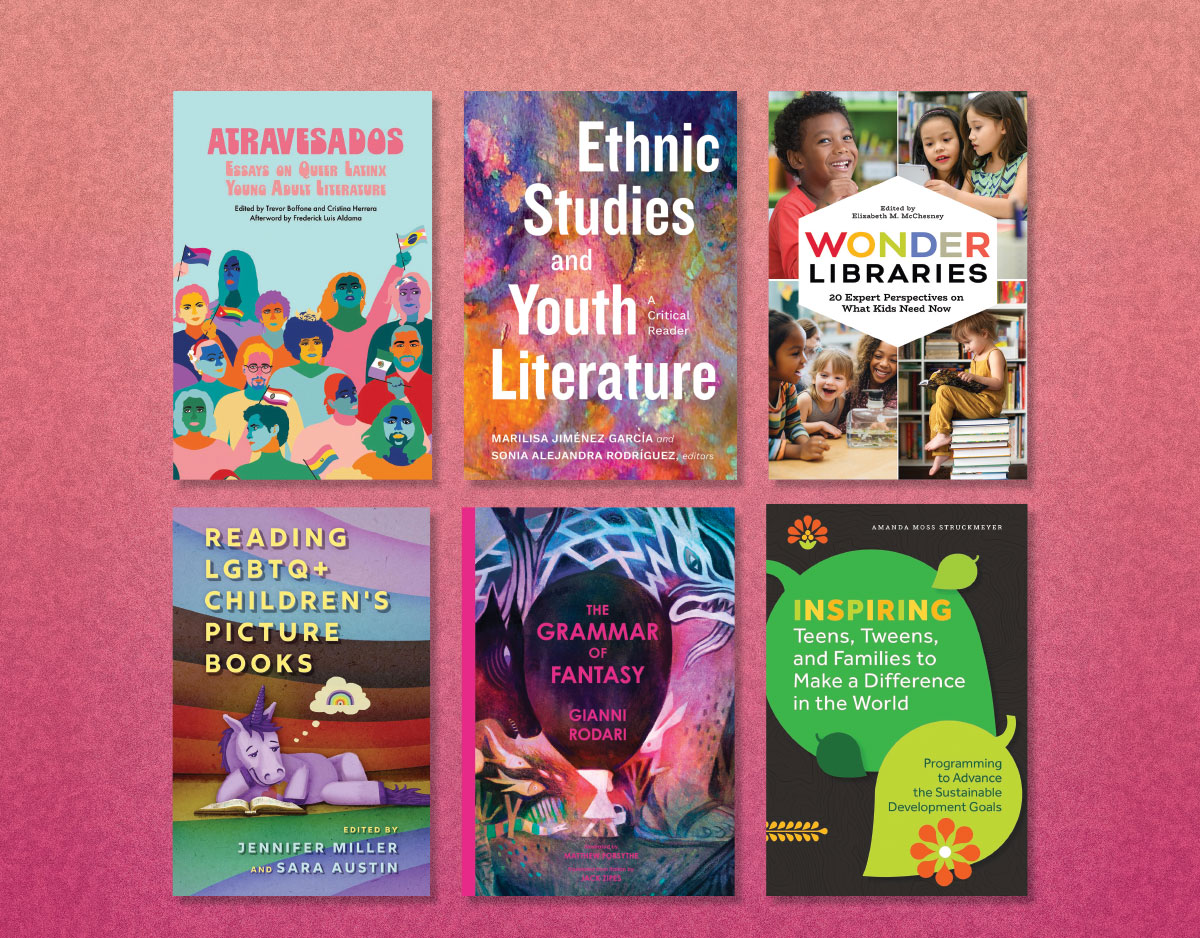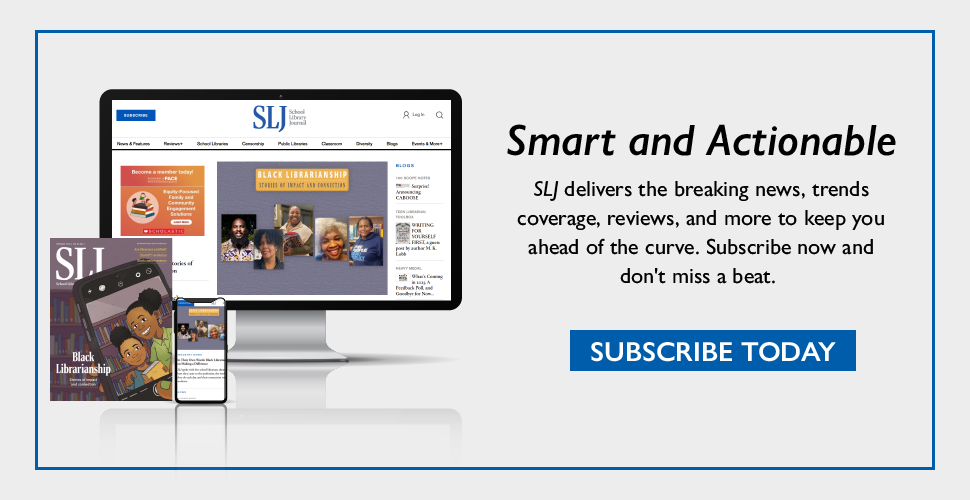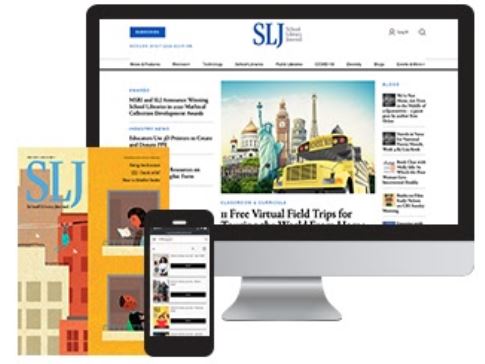6 Professional Reading Titles for the New School Year and Beyond
From Boffone and Herrera's overview of queer identity in YA literature to Struckmeyer's title on young adult library programming, these books will inspire librarians, both new and experienced, to take a fresh look at their programs and collections.

Boffone, Trevor & Cristina Herrera, eds. Atravesados: Essays on Queer Latinx Young Adult Literature. 254p. (Children’s Literature Association). Univ. of Mississippi. Feb. 2025. Tr $110. ISBN 9781496854483; pap. $30. ISBN 9781496854490.
A beautiful and comprehensive overview of queer identity in YA literature. This compilation of essays features a variety of voices that critically analyze and engage with queer Latinx perspectives in YA fiction, a category that has historically overlooked Latinx readers—especially queer Latinx readers—as a viable market in the American sphere. However, this bookaffirms the wide diversity of YA fiction—in subject matter, medium, and audience range—that engages with Latinx culture. Throughout the essays, authors highlight how culturally relevant elements of queer storytelling, such as the serenata, are only possible when centering Latinx characters, underscoring the critical role YA fiction plays in subverting the traditionally tragic story of queer Latinx characters. The essays also highlight more complex themes, such as rejecting toxic masculinity, violence against femme bodies, the struggle of being an outsider in multiple communities, and navigating the paradox of family values within a homophobic family. VERDICT An exploration of Latinx queerness that was, is, and will be; a necessary and thorough examination of a subject that is frequently invisible in American media.–Jeanne Kambara
 García, Marilisa Jiménez & Sonia Alejandra Rodríguez, eds. Ethnic Studies and Youth Literature: A Critical Reader. 210p. (SUNY series in Multiethnic Literatures). SUNY Pr. Jul. 2025. Tr $120. ISBN 9798855802986.
García, Marilisa Jiménez & Sonia Alejandra Rodríguez, eds. Ethnic Studies and Youth Literature: A Critical Reader. 210p. (SUNY series in Multiethnic Literatures). SUNY Pr. Jul. 2025. Tr $120. ISBN 9798855802986.
This bold and necessary collection brings together scholars, educators, and writers who challenge assumptions and ideas about youth literature, calling for a deeper, more intentional engagement with ethnic studies frameworks. Through an array of critical perspectives, including Native Studies and womanism, the volume asks: “Who is telling the story?” and “Who gets to decide what stories matter?” Chapters examine everything from colonial legacies in school library collections to the pitfalls of representation without critique. The tone is urgent and scholarly, but accessible, making it ideal for teacher preparation programs, LIS coursework, and professional learning communities. Each chapter pushes readers to think beyond surface-level inclusion and toward structural change. Discussions of intersectionality, storytelling as resistance, and historical recovery are anchored by close literary analysis and compelling theoretical insights. The book also models the practices it advocates, centering scholars of color while asking tough, necessary questions. The editors address the limits of empathy, cautioning against relying on that alone to address systemic inequities in youth literature and education. This text is a standout in critical youth literature scholarship. It should be required reading for future teachers and librarians alike. VERDICT Highly recommended. An excellent, perspective-expanding resource that challenges readers to critically examine youth literature through an ethnic studies lens.–Christina Salazar
McChesney, Elizabeth M., ed. Wonder Libraries: 20 Expert Perspectives on What Kids Need Now. 144p. ALA Eds. Nov. 2024. pap. $49.99. ISBN 9798892555807.
A love letter and support for library workers of all types. This 16-chapter book can be read in any order and offers a variety of specific insights on the needs of today’s youth. It is meant to assist, motivate, and spark ideas for public library workers who serve children. The end of each chapter includes five actionable steps related to the chapter’s area of focus, such as using games for building strong communities, offering trauma-responsive library services, championing information literacy, and more. Readers who might not have time for entire chapters can quickly flip through the pages to get new ideas. Contributors are not librarians—rather those many librarians hope to have deep partnerships with, including authors, professors, and others. An index is included in the back matter. VERDICT Purchase as a refreshing antidote to negativity in the library landscape to lift moods, to share, and to offer hope.–Samantha Hull
Miller, Jennifer & Sara Austin, eds. Reading LGBTQ+ Children’s Picture Books. 296p. (Children’s Literature Association). Univ. of Mississippi. Jan. 2025. Tr $110. ISBN 9781496854902; pap. $30. ISBN 9781496854957.
A collection of essays that cover specific topics in LBGTQIA+ picture books. The authors of these academic writings include experts in the areas of English, queer and gender studies, education, and more. While some acknowledge current censorship attempts, all speak to the profound need for these books, as well as their most impactful uses by families, educators, librarians, mental health professionals, and the global publishing industry. One common thread is the deep investigation into how these books can be perceived in such opposite ways within the LGBTQIA+ community. For example, animal characters can be seen as universally appealing or can be read as dehumanizing. One researcher points out the potential harm to young people who read books with bullying themes, while others acknowledge the importance of preparing kids for that potential reality. A similar assertion is that some themes, such as anatomical discussions, might confuse children who aren’t ready for them; but again, those same books might be perfect for the right child. Ultimately, these scholars recommend that adult readers must follow the child’s lead. Each essay’s use of vocabulary is also enlightening: j wallace skelton presents the term GIaNT for “gender independent, nonbinary, and trans” children. One essay claims there has never been a Newbery or Caldecott winner that centers a LGBTQIA+ character; however, Kyle Lukoff’s Too Bright to See, with a transgender main character, won the Newbery Honor in 2022. VERDICT Although more for youth literature scholars, this collection will benefit educators, librarians, families, and the publishing industry, particularly as justification to create and include LGBTQIA+ picture books in classrooms, schools, and public libraries.–Elaine Fultz
 Rodari, Gianni. The Grammar of Fantasy: An Introduction to the Art of Inventing Stories. tr. from Italian by Jack Zipes. illus. by Matthew Forsythe. 316p. Enchanted Lion. May 2025. Tr $29.95. ISBN 9781592703050.
Rodari, Gianni. The Grammar of Fantasy: An Introduction to the Art of Inventing Stories. tr. from Italian by Jack Zipes. illus. by Matthew Forsythe. 316p. Enchanted Lion. May 2025. Tr $29.95. ISBN 9781592703050.
This collection of essays, originally published in Italian in 1973, is a cross section of ideas where art, philosophy, pedagogy, poetry, imagination, and play intersect to inspire educators to reexamine how they nurture creativity in their students. At first, the book’s perspective on writing and creativity might feel like a relic of a bygone time—not outdated, but refreshingly different from our fast-paced, hyperconnected world. It takes readers back to an era before the internet reshaped how people engage with words and images. Paired with fantastical illustrations, the text serves as both a historical artifact and an invitation to slow down, to play with language, and to rediscover an approach to storytelling and teaching that values depth, whimsy, and thoughtful experimentation. Rodari includes examples of his writing and storytelling workshops with students, along with a wealth of books and essays that informed his philosophy. Combined with colorful and evocative illustrations, the book remains atmospheric and engaging throughout. Exercises such as “The Fantastic Binomial” and “The Arbitrary Prefix” offer practical techniques adaptable for any age group. Despite its philosophical and pedagogical nature, this book is profoundly inspiring. It speaks about education in a way that acknowledges the writing process as nonlinear, winding, and deeply subjective. Rodari doesn’t just advocate for imaginative thinking in children; he invites educators to adopt this mindset as well, creating a ripple effect that fuels an entire learning environment with curiosity and play. This “throwback” to an earlier era of professional learning feels strikingly, refreshingly different from today’s educational texts. VERDICT A must-have for educators and librarians looking to inject creativity into their classrooms. Rodari provides a thoughtful, informed approach to how imagination and play can foster critical thinking.–Rachel Joiner
 Struckmeyer, Amanda Moss. Inspiring Teens, Tweens, and Families to Make a Difference in the World: Programming to Advance the Sustainable Development Goals. 144p. ALA Eds. May 2025. pap. $44.99. ISBN 9798892553223.
Struckmeyer, Amanda Moss. Inspiring Teens, Tweens, and Families to Make a Difference in the World: Programming to Advance the Sustainable Development Goals. 144p. ALA Eds. May 2025. pap. $44.99. ISBN 9798892553223.
This title provides a foundational framework for building a series of young adult programs centered around themes such as feeding the world, gender equality, affordable and clean energy, climate action, and more. Each section is broken down within the theme through programs geared towards families, tweens, or teens. An extremely helpful element for librarians is the inclusion of suggested book club topics, each paired with relevant example book lists. For example, within the chapter of Ending Poverty, books such as Angie Thomas’s The Hate U Give and Jennifer Richard Jacobson’s Paper Things are suggested, among other relevant titles. Some of the suggested activities are practical and low-cost to no-cost, with each section usually incorporating at least two or three programs that would require materials or funding of some sort. The balance of this makes the book helpful to libraries both big and small, as well as an informative read for teen and tween librarians both established or just starting out. The “Community Connections” at the end of the chapters are slightly less helpful, as they often give somewhat overarching and ephemeral suggestions of reaching out to a local expert or business who could come and speak at the library on the theme the programming is based around. These sections are short and feel like an afterthought. However, they do not detract from the title as a whole, which functions as a useful tool for any librarian trying to engage a younger, socially conscious crowd looking to make a difference in their local community, while still being engaged at the library. VERDICT Highly recommended for librarians who are looking for new and fresh ideas on youth programming, but struggling to connect their brainstorming in a cohesive, marketable series of events.–Ryan Donovan
RELATED
The job outlook in 2030: Librarians will be in demand
The job outlook in 2030: Librarians will be in demand
ALREADY A SUBSCRIBER? LOG IN
We are currently offering this content for free. Sign up now to activate your personal profile, where you can save articles for future viewing






Add Comment :-
Be the first reader to comment.
Comment Policy:
Comment should not be empty !!!